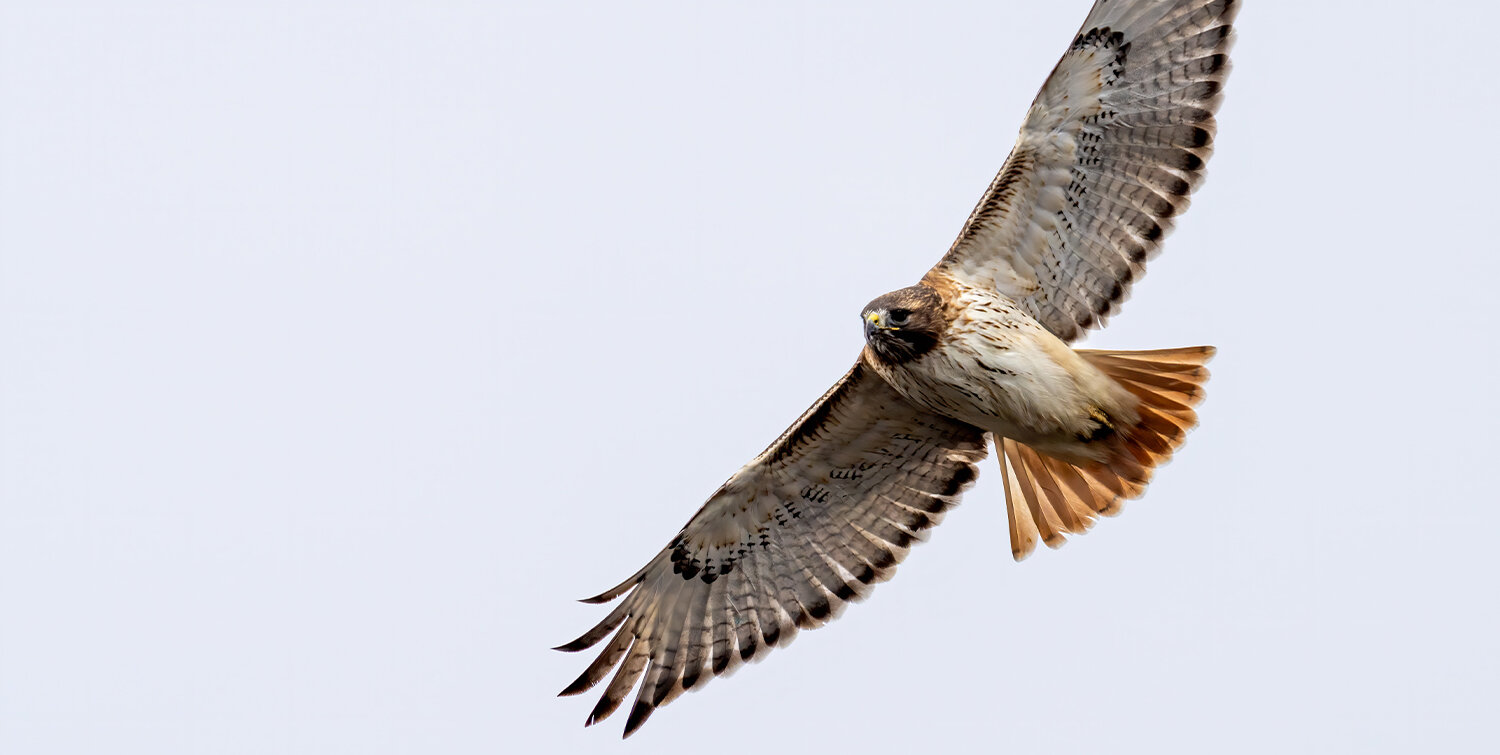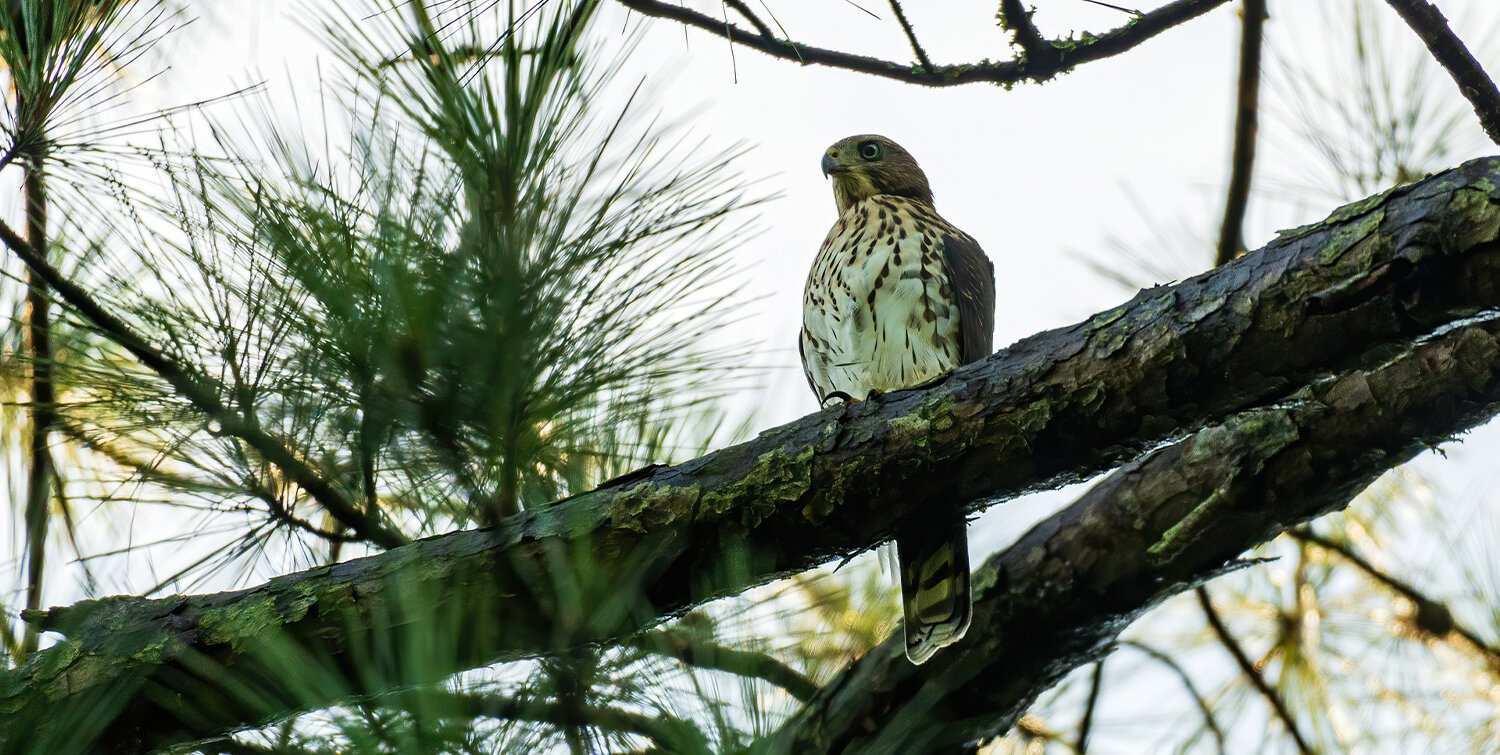Bird Watching with Hawk Eye Vision
Bird Watching with Hawk Eye Vision
Written by Kristine Manganelli (Somerset County 4-H Coordinator)
Red Tailed Hawk
Now that the leaves have completed their annual dance to the ground, the branches will be bare until spring. Although this time of year is quiet in the wild world, it is a great time to bird watch. The lack of leaves exposes some action that is blocked to us in other seasons.
As mentioned in a recent post, late fall and winter provide us a view of owls that we are not privy to other times of the year. Owls are a part of a group of birds called raptors that also includes eagles, falcons, and hawks. Unlike owls, hawks are diurnal, meaning they are active during the day. The term “hawk” is used to describe diurnal, predatory birds.
While my own personal hawk sightings are rare, this only makes it more of a gift when they do happen. I almost always spot them in flight, soaring with wings outspread as in the photo above. I have a beautiful memory of a red shouldered hawk perched on a branch in my yard, as snow fell all around.
I’ve also seen less beautiful moments as the predator/prey relationship played out before my eyes. A hawk swooped down from the sky, and expertly grabbed a squirrel from the ground, before swooping off as quickly as it came. While it is not exactly pretty to see, it is the circle of life, and animals need to eat to survive. The circle of life keeps nature in balance.
Hawks and other raptors share characteristics of strong, hooked beaks and talons used to catch, kill, and eat prey. They are incredibly fast, some species reaching up to 150 miles per hour when diving. Perhaps their best asset is eyesight, considered the greatest in the entire animal world. Their vision is 8 times as powerful as that of humans. Females are larger in size than males. Hawks typically pair for life, and will return annually to their partner and breeding grounds with loyalty.
Today’s post will focus on 2 categories of hawk; Buteos and Accipiters. Buteos are large hawks with long wings and short tails. Red-tailed Hawks are a species of Buteo hawk, and New Jersey’s most common hawk. While many species migrate to warmer climates for the winter, Red-tailed hawks are year-round residents in our state. In the winter, they are more numerous, as their Northern friends migrate to our area for the season. They are considered a large hawk, with wingspans up to 5 feet across.
They are often seen flying in wide circles or perched in trees, and can be identified by red tail plumage, as well as their famous high-pitched shrieking call. They are vocal birds, so be sure to check the sky if you hear a shrill cry above. You may be surprised to learn that the hawk’s shriek is used in film as a substitute for the eagle’s cry, because eagle vocals are actually quite pitiful in comparison.
The habitat of Red-tailed hawks is a mixture of woodlands and open fields and pastures. They build large nests with sticks in the tallest available tree. Their diet includes small mammals like mice, voles, squirrels, and rabbits.
Juvenile Coopers Hawk
The second category of hawk to be highlighted are Accipiters. They differ from Buteos in their smaller stature and shorter wings which span 2-3 feet in length. Their long tails act as rudders that help them navigate around the trees, as they prefer to live in deeply wooded areas. Instead of circling, their flight pattern consists of several rapid flaps followed by a glide. Accipiters are known to be mysterious, and are less commonly observed than most other hawks.
The Cooper’s Hawk is a species of Accipiter, is also a year-round resident in New Jersey. It is primarily a bird-eating hawk, eating small species such as thrushes, jays, woodpeckers, blackbirds, doves, sparrows, and pheasants. In the winter when food is scarce, sightings may come more often, and it is possible to see Cooper’s hawks in residential areas where they hunt at bird feeders.
The Cooper’s Hawk population has decreased over time, and is considered a species of special concern here in New Jersey. As our state becomes even more densely populated, and more forested areas are sacrificed to development, Accipiters are disproportionately impacted by habitat loss because of their preference to live in heavily wooded areas.
Luckily, Hawks are protected by federal laws, and in the state of New Jersey it is illegal to capture, kill, or possess a hawk.
Get Outside
Use your hawk-eye vision to bird watch in your backyard. Be sure to look closely (with binoculars if possible) because it is not easy to tell the different species apart. Use the New Jersey eBird guide to help you identify any Accipiters you might see, or use the National Audubon Society guide to determine if you’ve spotted a Red-tailed hawk.
Sources:
“All About Birds: Cooper’s Hawk Identification.” The Cornell Lab of Ornithology. https://www.allaboutbirds.org/guide/Coopers_Hawk/id. Accessed 19 Nov. 2020.
“All About Birds: Red-tailed Hawk.” The Cornell Lab of Ornithology. https://www.allaboutbirds.org/guide/Red-tailed_Hawk/. Accessed 19 Nov. 2020.
“Hawk Facts.” The Raptor Trust. https://theraptortrust.org/bird-resources/bird-facts/hawk-facts/. Accessed 19 Nov. 2020.
“New Jersey’s Endangered Species Threatened Species Field Guide.” Conserve Wildlife Foundation of New Jersey. http://www.conservewildlifenj.org/species/fieldguide/view/Accipiter%20cooperii/. Accessed 19 Nov. 2020.


